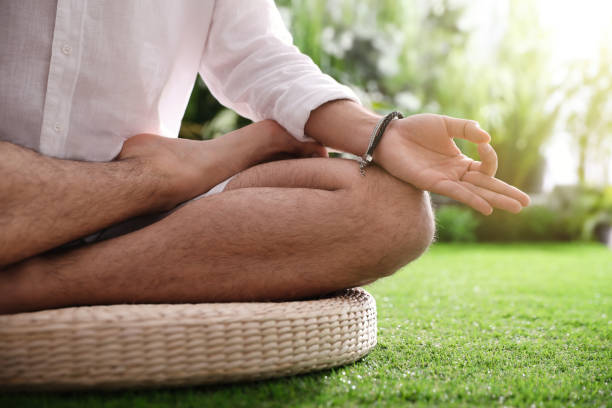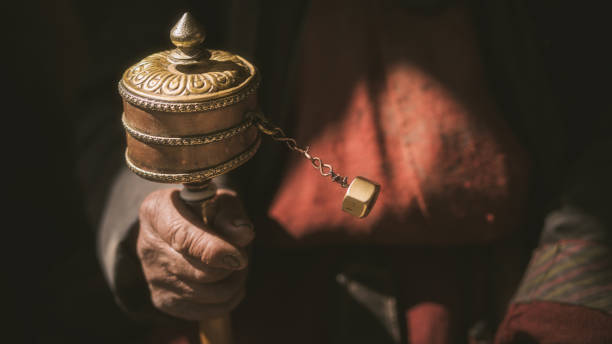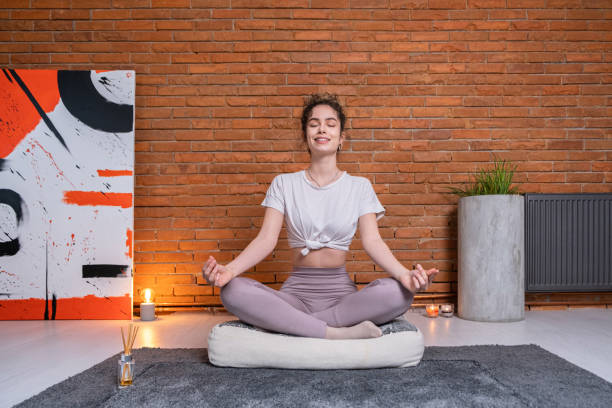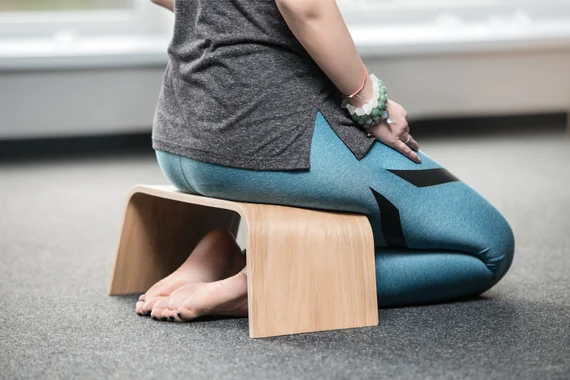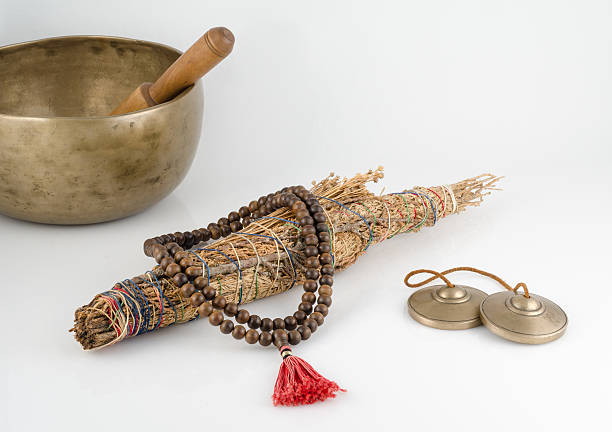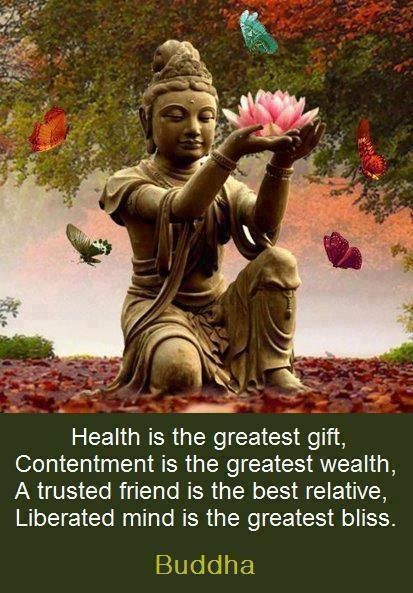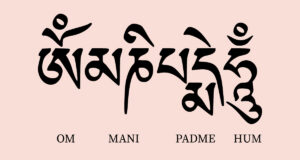From ancient Buddhist prayer wheels to modern meditation chairs, the variety of meditation equipment & accessories reflects both cultural traditions and the evolving needs of practitioners. These tools provide comfort, aid concentration, and deepen one’s connection to the practice. In this article, we will explore essential meditation equipment & accessories. Each of these items holds a unique significance, whether it is for creating a sacred space, supporting posture, or guiding spiritual focus. So, let’s know about meditation equipment & accessories.
Meditation Equipment & Accessories:
Meditation is a practice of stillness and self-awareness, but the right meditation equipment & accessories can make the experience more comfortable, meaningful, and transformative. From traditional tools like Buddhist prayer wheels and meditation bells to modern supports like mats, stools, and chairs, each item serves a purpose in enhancing focus, posture, and spiritual connection. These meditation equipment & accessories not only aid physical comfort but also create a sacred atmosphere that encourages deeper mindfulness and inner peace.
1. The Buddhist Prayer Wheel:
The Buddhist prayer wheel, or Mani wheel, is a sacred object rooted in Tibetan Buddhism. Traditionally, it is a cylindrical wheel inscribed with the mantra Om Mani Padme Hum. The wheel can be handheld, wall-mounted, or even large enough to be turned by water or wind. The belief is that spinning the wheel has the same spiritual effect as reciting the mantra aloud.
Purpose and Symbolism:
The prayer wheel is more than just a tool; it is a spiritual instrument that helps spread blessings and compassion. Each rotation symbolizes the accumulation of positive karma and the purification of negative energies. For devout practitioners, using the prayer wheel is a physical act of devotion, merging mindfulness with movement.
Modern Use:
Today, prayer wheels are not only found in monasteries but also in homes and meditation spaces worldwide. Handheld prayer wheels are popular for personal practice, while larger ones are installed in temples as communal spiritual tools. Some modern designs even integrate technology, such as electronic wheels powered by batteries or solar energy.
2. Meditation Mat:
A meditation mat, often called a zabuton in Zen traditions, is a foundational accessory for practitioners. It provides a comfortable base for seated meditation, ensuring stability and insulation from the ground.
Importance of a Meditation Mat:
Meditating directly on a hard surface can cause discomfort and distractions. A mat offers cushioning and defines a sacred personal space, signaling the mind and body that it’s time to focus inward. It also prevents strain on the knees, ankles, and hips during extended sessions.
Materials and Designs:
Meditation mats are available in various materials, such as cotton, wool, and eco-friendly fabrics. Some are minimalist in design, while others feature sacred symbols like the lotus, mandala, or Om. For many, the mat becomes an intimate part of their daily ritual, a portable sanctuary that travels with them.
3. Meditation Stool:
For practitioners who find traditional cross-legged sitting challenging, a meditation stool offers an ergonomic alternative. These low, angled stools allow a kneeling posture, where the sitter’s weight is supported by their shins and the stool, relieving pressure from the lower back.
Benefits:
-
Encourages a straight spine, essential for deep breathing and mental clarity.
-
Reduces strain on the knees compared to cross-legged sitting.
-
Promotes longer, more comfortable meditation sessions.
Types:
Meditation stools vary in style some are foldable and portable, while others are fixed and sturdy. Wooden stools are the most traditional, though cushioned versions are also available. Many practitioners appreciate stools for providing a balance between comfort and discipline, supporting posture without encouraging slouching.
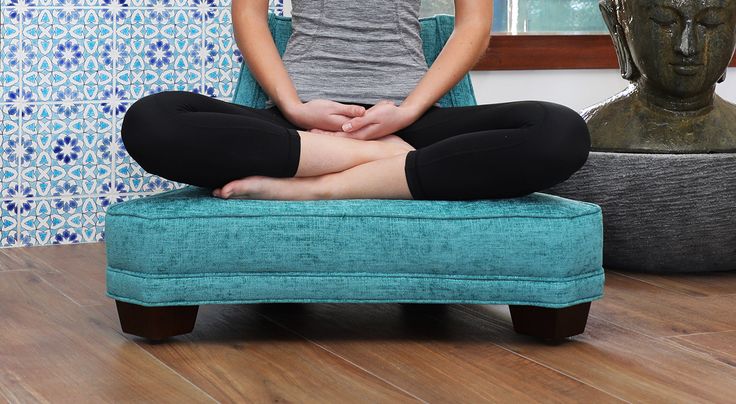
4. Meditation Chair:
As meditation becomes more mainstream, meditation chairs have gained popularity. Unlike traditional mats or stools, chairs are designed for those who struggle with sitting on the floor due to age, health issues, or personal comfort.
Features:
Meditation chairs often come with back support, cushioning, and ergonomic design to help maintain a relaxed but upright posture. Some fold flat for easy storage, while others are luxurious with armrests and plush seating.
Advantages:
- Ideal for people with back or joint issues.
- Allows longer sessions without physical discomfort.
- Makes meditation accessible to a wider audience, especially beginners.
Meditation chairs symbolize the adaptability of meditation practices, blending ancient techniques with modern lifestyles.
5. Meditation Bell:
Sound has always played an essential role in spiritual practices. The meditation bell, also called a Tingsha or Singing Bowl in some traditions, is a tool used to mark the beginning and end of meditation sessions.
Significance:
The resonant sound of a meditation bell clears mental clutter, draws attention inward, and establishes a sacred atmosphere. The vibrations are said to harmonize the body’s energy and align the practitioner with higher states of consciousness.
Types:
- Singing bowls: Metal or crystal bowls played by striking or circling with a mallet, producing long, soothing tones.
- Tingsha cymbals: Small hand-held cymbals used in Tibetan practices.
- Temple bells: Larger bells found in monasteries, rung during rituals or group meditations.
Each type creates a unique soundscape, helping practitioners sink deeper into mindfulness and relaxation.
Creating a Meditation Space with Meditation Equipment & Accessories:
Meditation is one of the oldest spiritual practices, embraced by millions across the globe to cultivate inner peace, clarity, and mindfulness. While meditation itself requires nothing more than your presence and focus, certain meditation equipment & accessories can enhance the experience.
While each accessory, whether a prayer wheel, bell, or mat, serves a unique purpose, together they help create a personal meditation sanctuary. This sacred space does not require elaborate design. A simple corner with a mat, a symbol, and a bell can transform into a place of peace and reflection.
Some tips for building a meditation space include:
- Choose a quiet, uncluttered area with natural light if possible.
- Use a meditation mat or chair to define the practice space.
- Incorporate symbols or art that resonate with your spiritual path.
- Add a meditation bell or singing bowl to establish rhythm and focus.
- Keep the space clean and dedicate it solely to meditation to maintain its sanctity.
Conclusion:
Meditation is a timeless practice that requires only your presence and intention. Yet, throughout history, practitioners have turned to meditation equipment & accessories to support and deepen their journey. Incorporating these items is not about materialism but about creating an environment conducive to mindfulness and inner stillness. Whether you are a beginner or an advanced practitioner, surrounding yourself with meaningful meditation equipment & accessories can transform your practice into a more immersive and transformative experience.
Ultimately, meditation equipment & accessories serve as reminders: to pause, breathe, and reconnect with the present moment. They invite us to turn inward, seek balance, and cultivate the peace that lies within.
FAQ:
Q. Do I need meditation equipment & accessories to start meditating?
A. No, meditation can be practiced without any meditation equipment & accessories. However, accessories like mats, stools, or bells can make the experience more comfortable and help deepen focus.
Q. What is the purpose of a meditation mat?
A. A meditation mat provides cushioning, reduces strain on knees and ankles, and creates a designated sacred space for practice.
Q. How does a Buddhist prayer wheel work?
A. A Buddhist prayer wheel is inscribed with mantras, and when spun, it is believed to release spiritual blessings and generate positive energy, similar to chanting the mantra aloud.
Q. Which is better for beginners: a meditation stool or chair?
A. It depends on your comfort level. A stool supports a kneeling position with good posture, while a chair provides back support and is ideal for those with joint or back issues.
Q. What is a meditation bell used for?
A. A meditation bell produces soothing vibrations that signal the start or end of practice, clear the mind, and create a calming atmosphere.
Q. Can meditation symbols really enhance focus?
A. Yes. Meditation symbols such as Om, lotus, or mandalas serve as visual anchors, helping practitioners maintain concentration and connect with spiritual truths.
Q. What type of meditation art is most effective?
A. Mandala art, sacred geometry, and nature-inspired artworks are commonly used. The best choice depends on what resonates with your personal meditation practice.
Q. How do I choose the right meditation equipment?
A. Consider your comfort, physical needs, and meditation style. For example, if sitting cross-legged is difficult, a stool or chair may be more suitable, while sound lovers may prefer bells or singing bowls.
Q. Is meditation equipment expensive?
A. Not necessarily. While some accessories like high-quality chairs or large singing bowls can be costly, basic mats, symbols, or small bells are affordable.
Q. Can I create a meditation space at home without spending much?
A. Yes. A quiet corner with a simple mat, a symbol or artwork, and perhaps a candle or small bell is enough to create a peaceful meditation environment.

